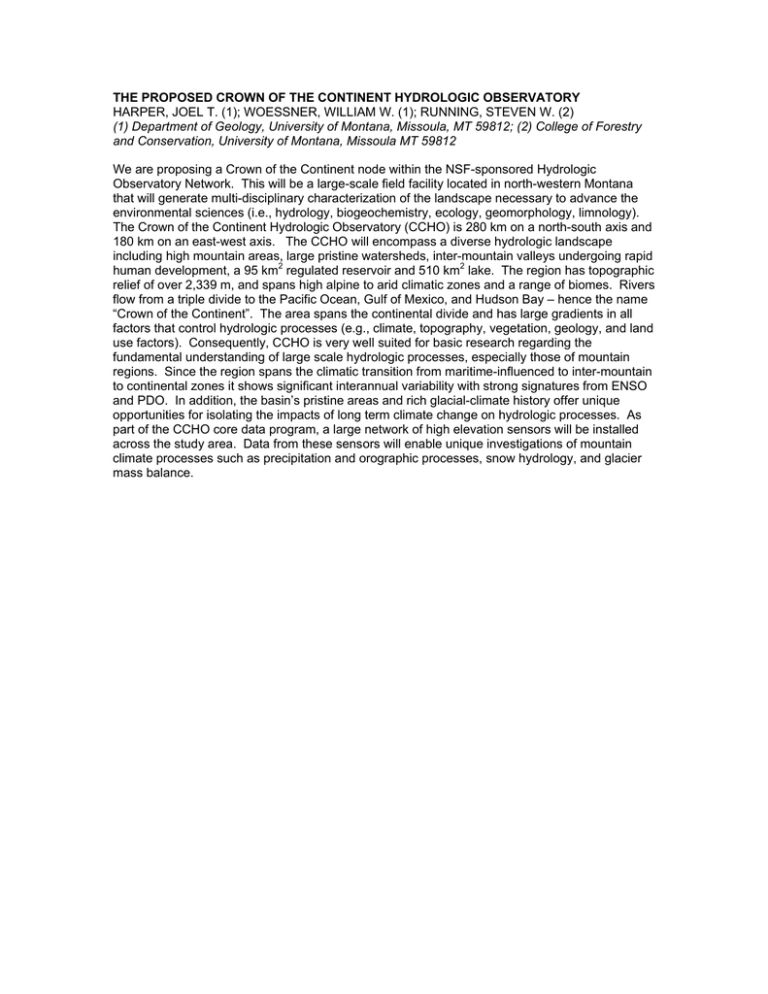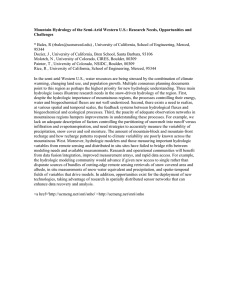THE PROPOSED CROWN OF THE CONTINENT HYDROLOGIC OBSERVATORY
advertisement

THE PROPOSED CROWN OF THE CONTINENT HYDROLOGIC OBSERVATORY HARPER, JOEL T. (1); WOESSNER, WILLIAM W. (1); RUNNING, STEVEN W. (2) (1) Department of Geology, University of Montana, Missoula, MT 59812; (2) College of Forestry and Conservation, University of Montana, Missoula MT 59812 We are proposing a Crown of the Continent node within the NSF-sponsored Hydrologic Observatory Network. This will be a large-scale field facility located in north-western Montana that will generate multi-disciplinary characterization of the landscape necessary to advance the environmental sciences (i.e., hydrology, biogeochemistry, ecology, geomorphology, limnology). The Crown of the Continent Hydrologic Observatory (CCHO) is 280 km on a north-south axis and 180 km on an east-west axis. The CCHO will encompass a diverse hydrologic landscape including high mountain areas, large pristine watersheds, inter-mountain valleys undergoing rapid human development, a 95 km2 regulated reservoir and 510 km2 lake. The region has topographic relief of over 2,339 m, and spans high alpine to arid climatic zones and a range of biomes. Rivers flow from a triple divide to the Pacific Ocean, Gulf of Mexico, and Hudson Bay – hence the name “Crown of the Continent”. The area spans the continental divide and has large gradients in all factors that control hydrologic processes (e.g., climate, topography, vegetation, geology, and land use factors). Consequently, CCHO is very well suited for basic research regarding the fundamental understanding of large scale hydrologic processes, especially those of mountain regions. Since the region spans the climatic transition from maritime-influenced to inter-mountain to continental zones it shows significant interannual variability with strong signatures from ENSO and PDO. In addition, the basin’s pristine areas and rich glacial-climate history offer unique opportunities for isolating the impacts of long term climate change on hydrologic processes. As part of the CCHO core data program, a large network of high elevation sensors will be installed across the study area. Data from these sensors will enable unique investigations of mountain climate processes such as precipitation and orographic processes, snow hydrology, and glacier mass balance.






